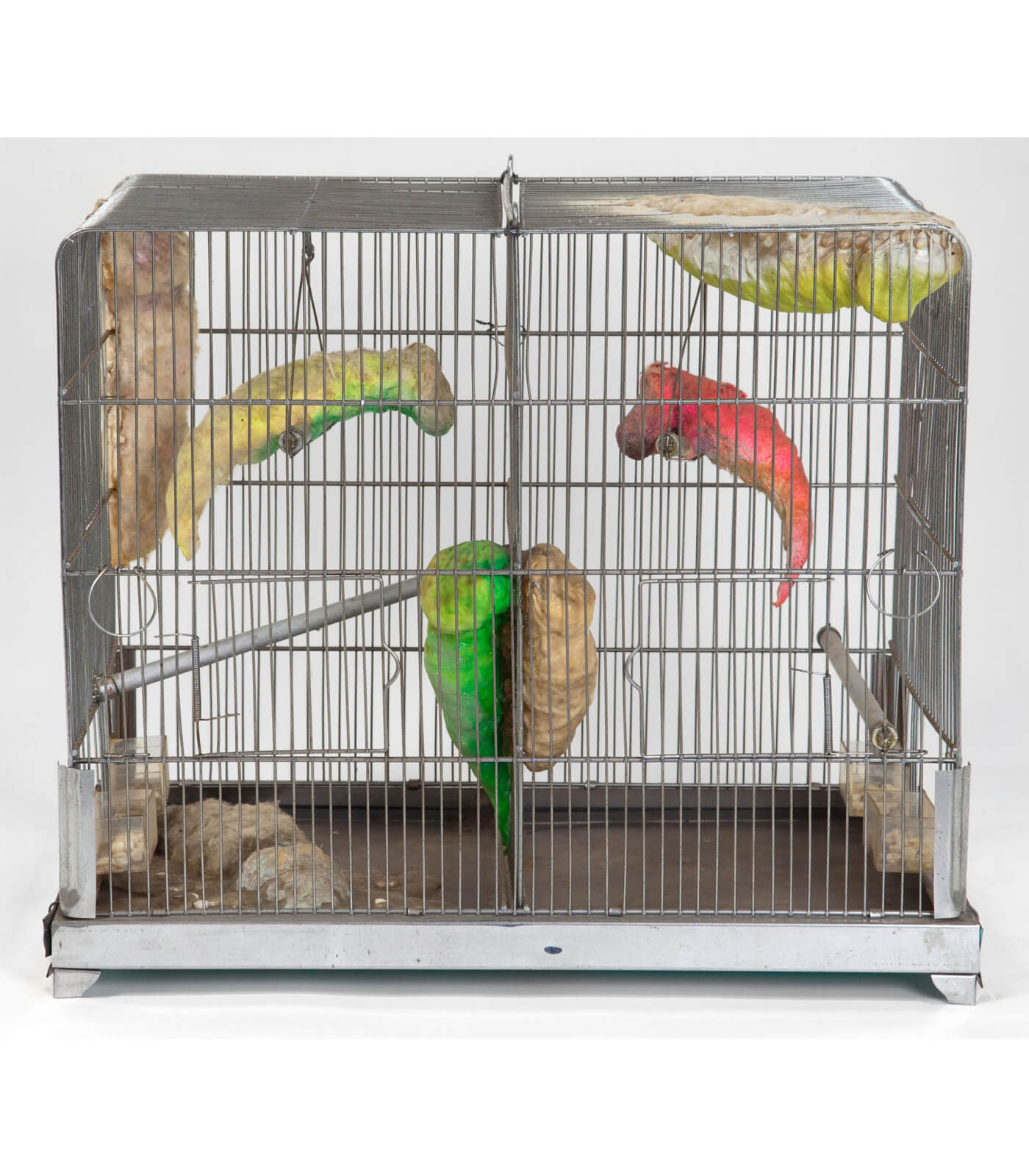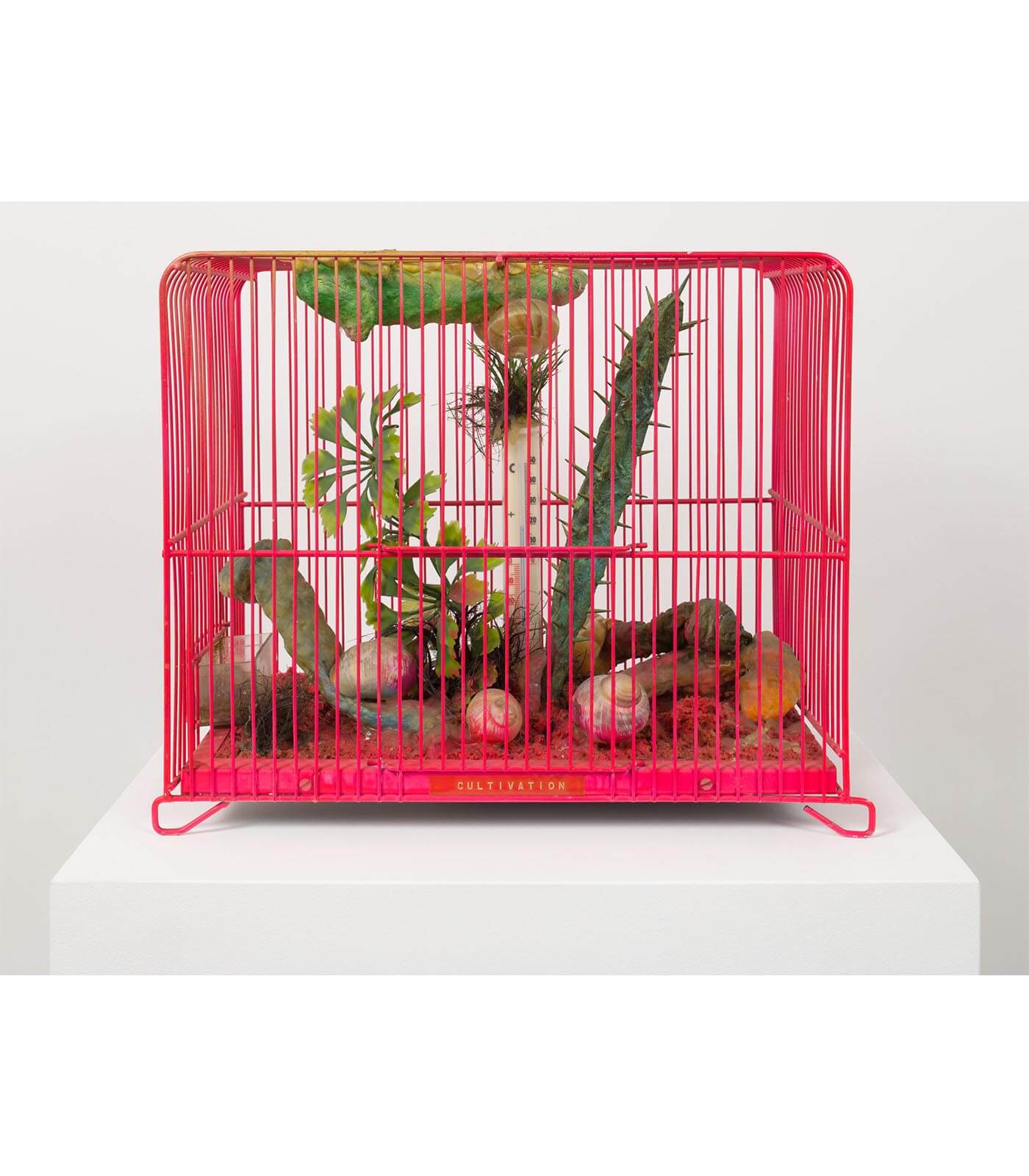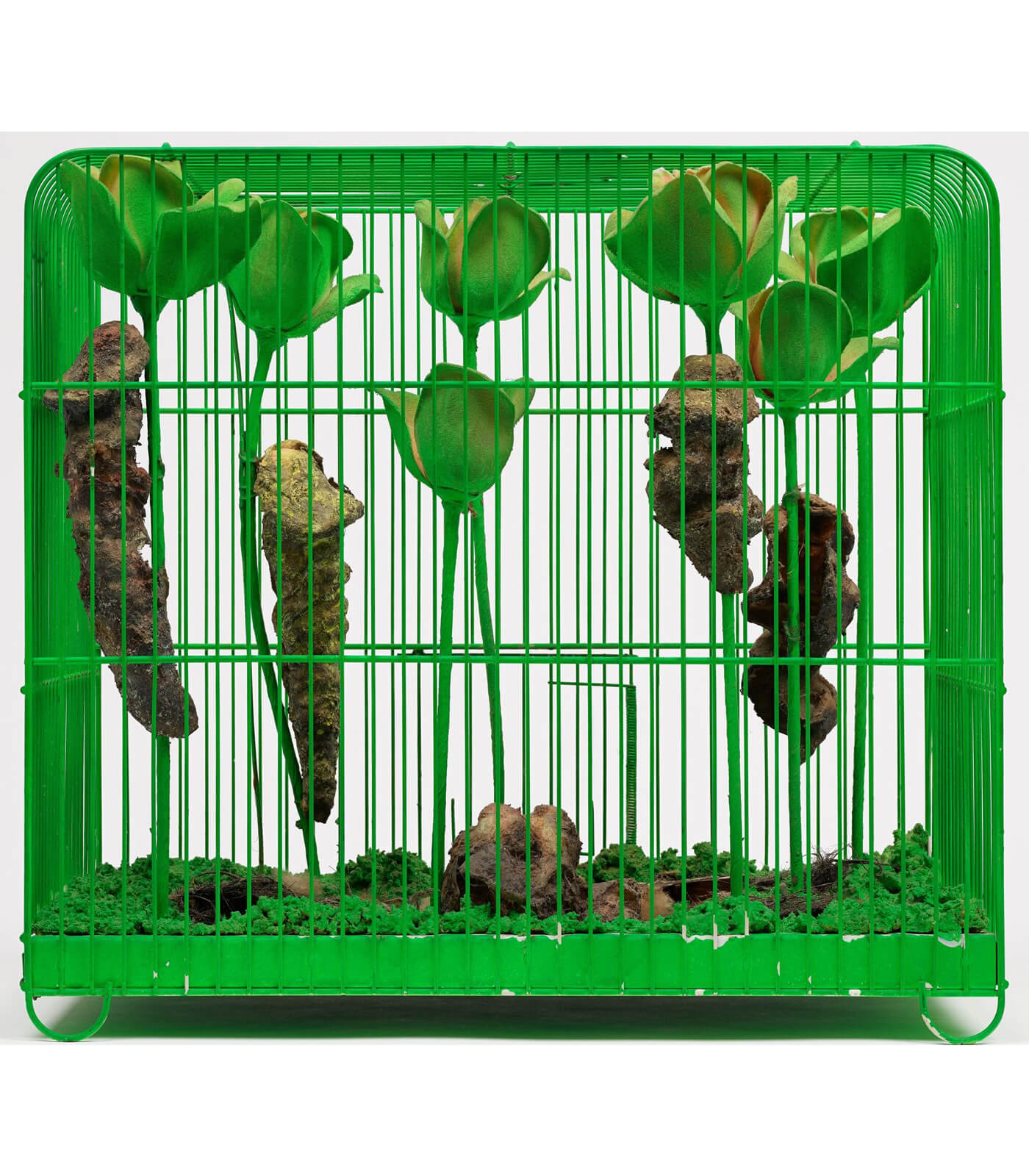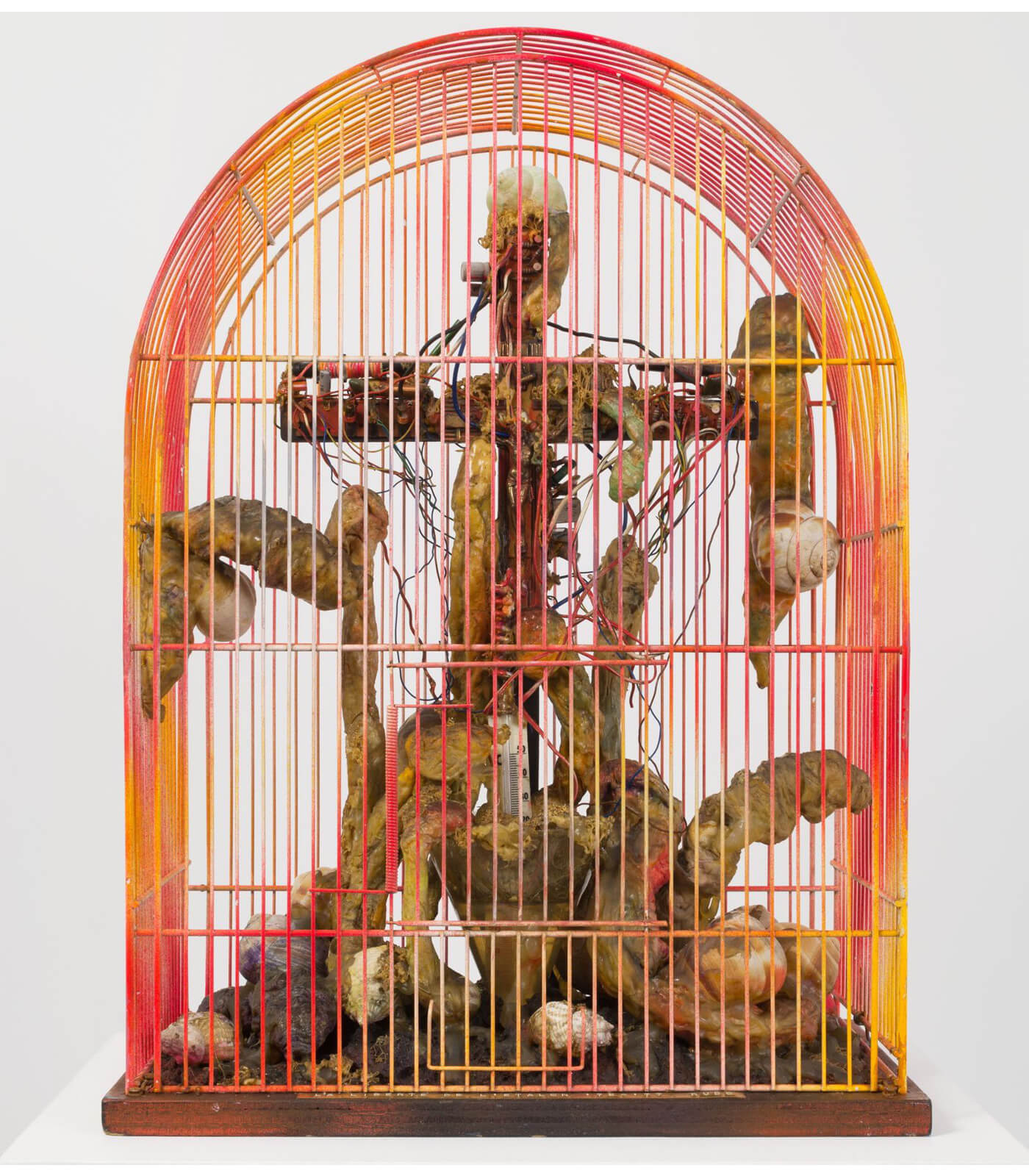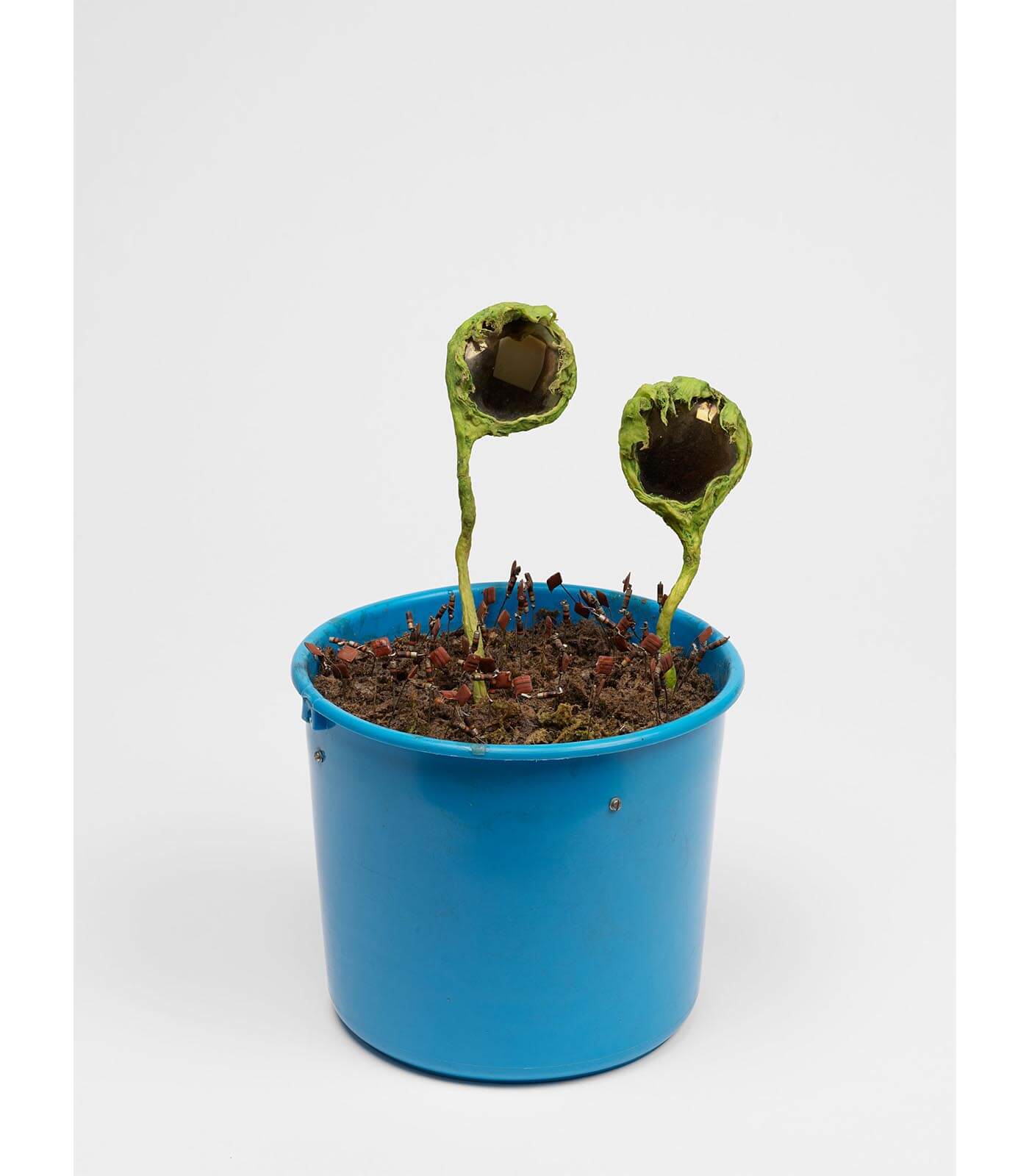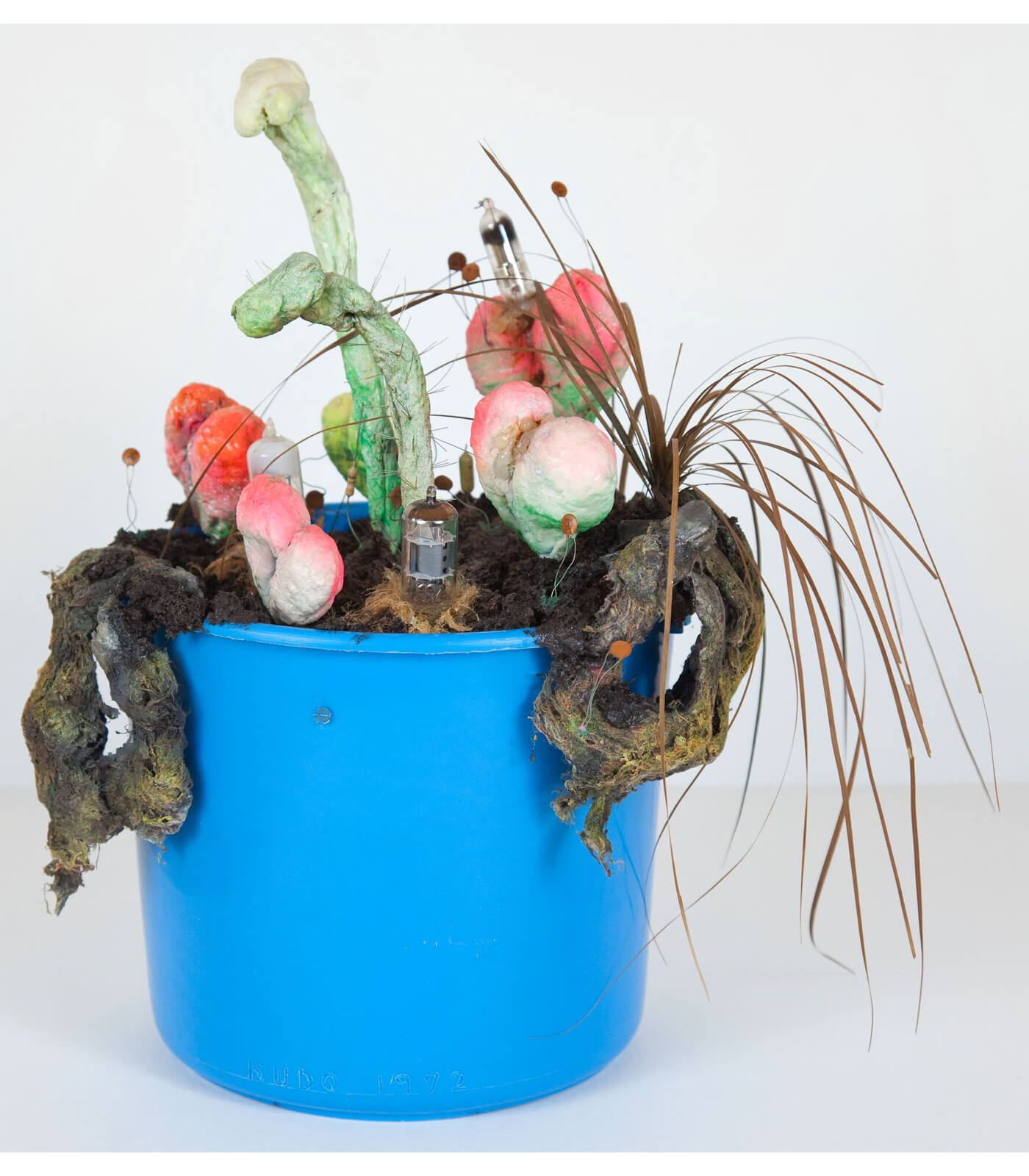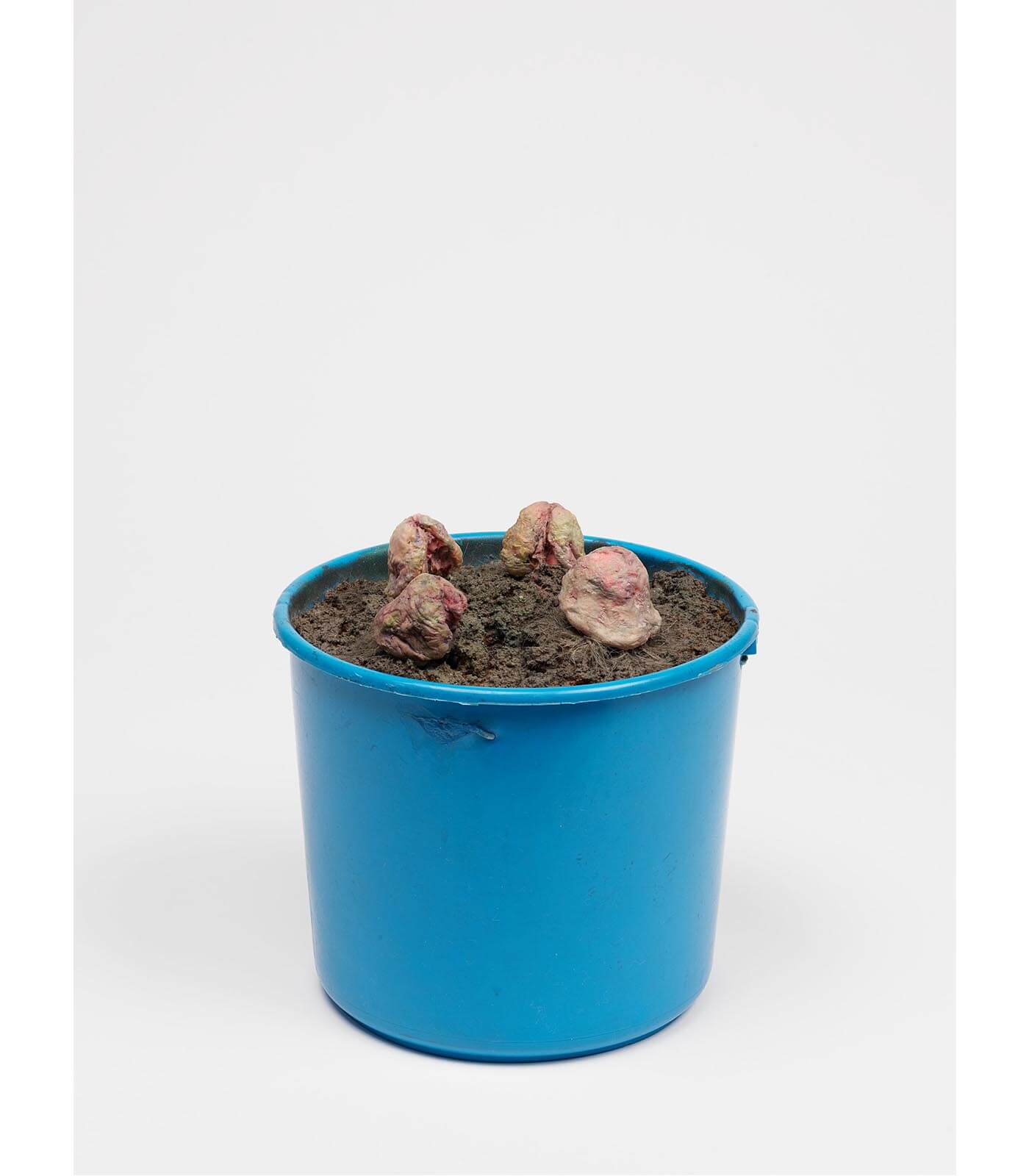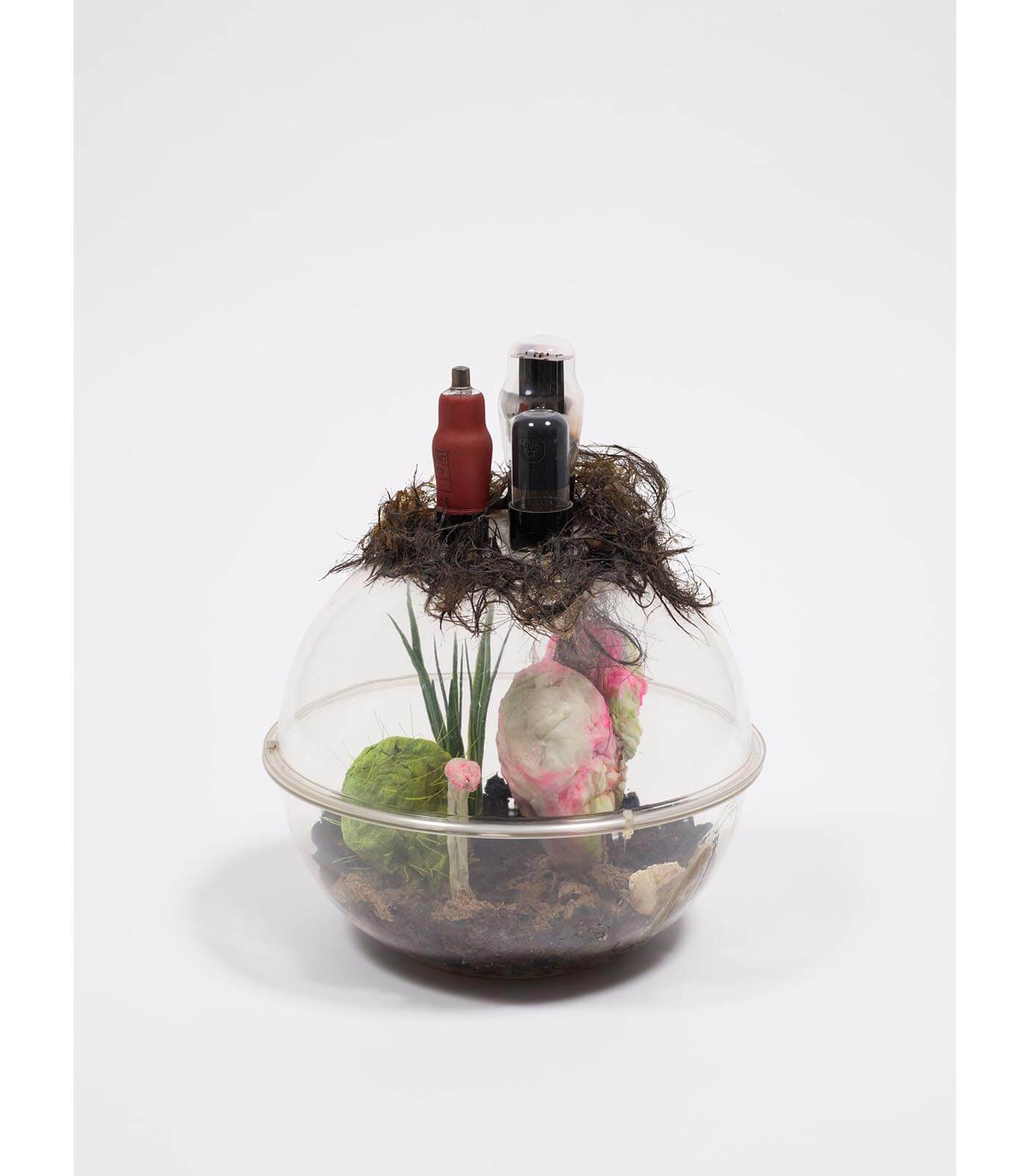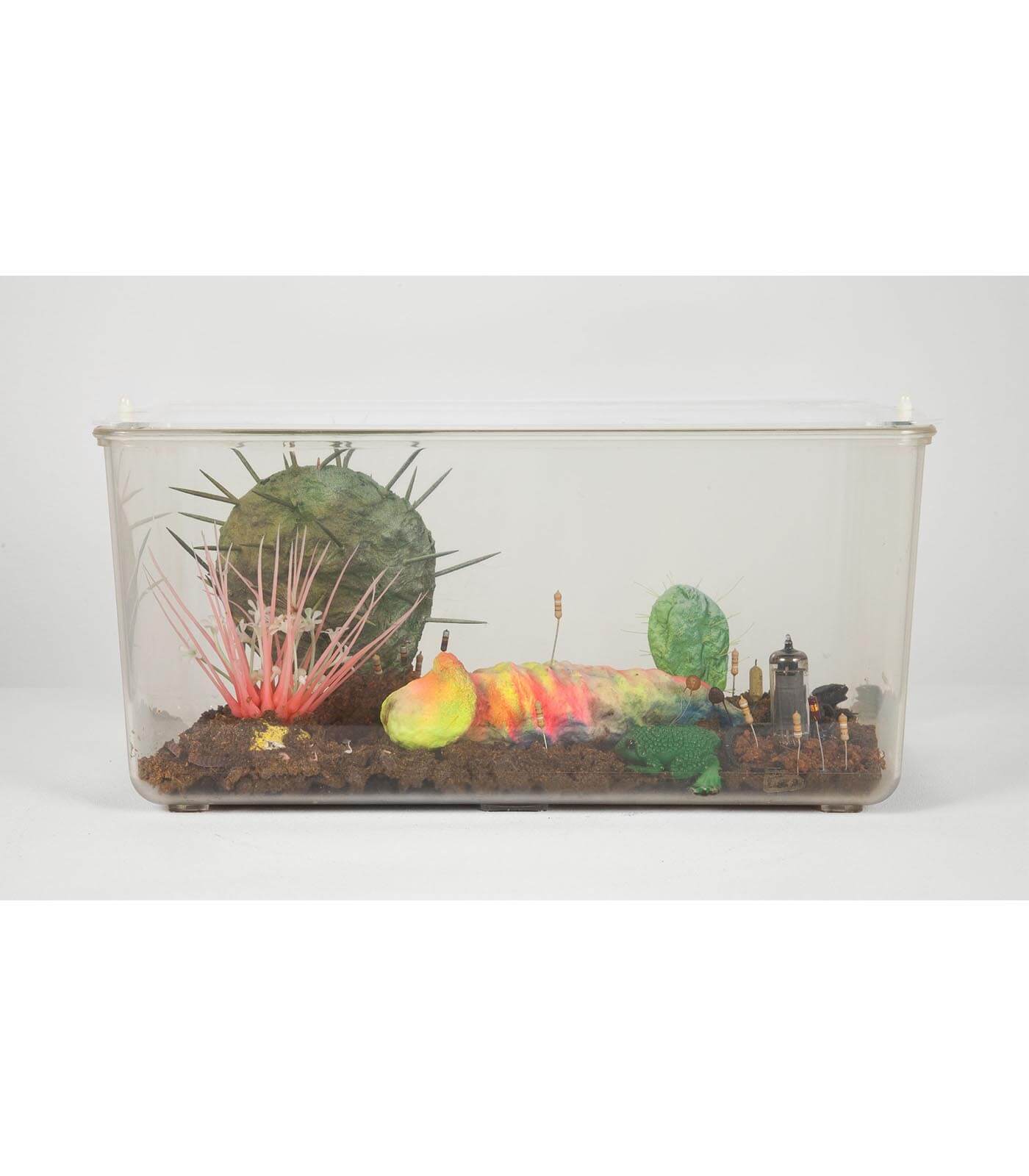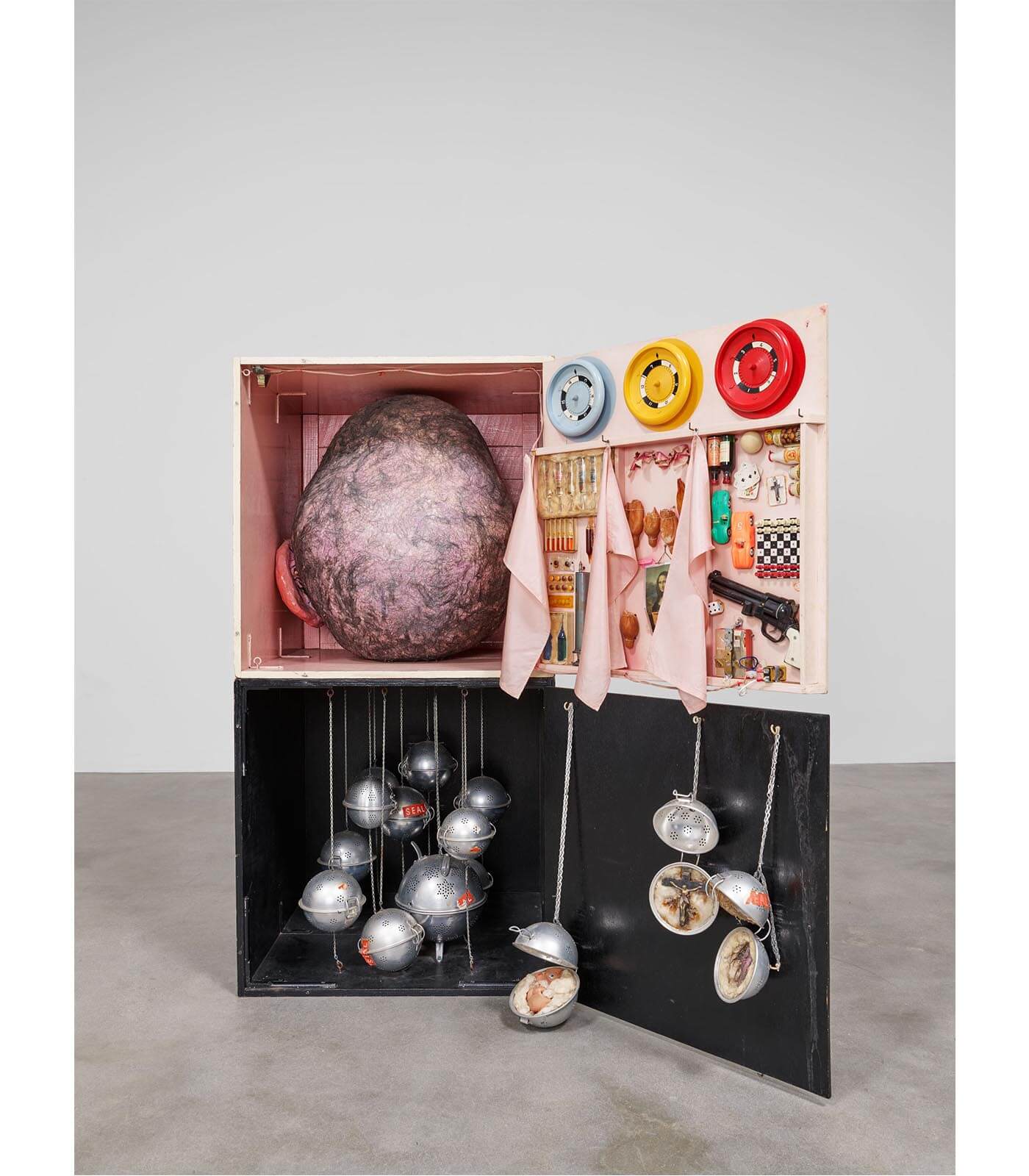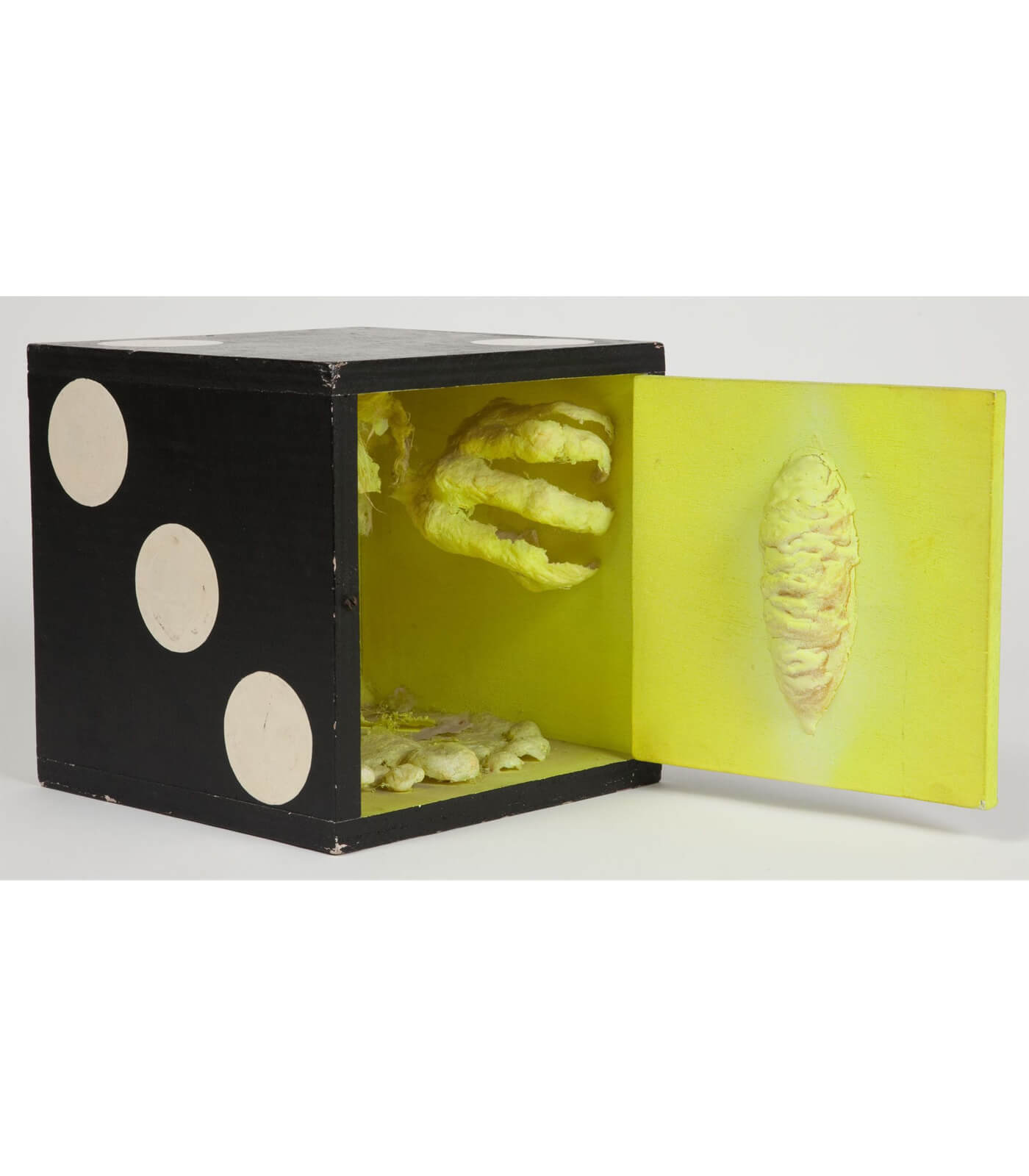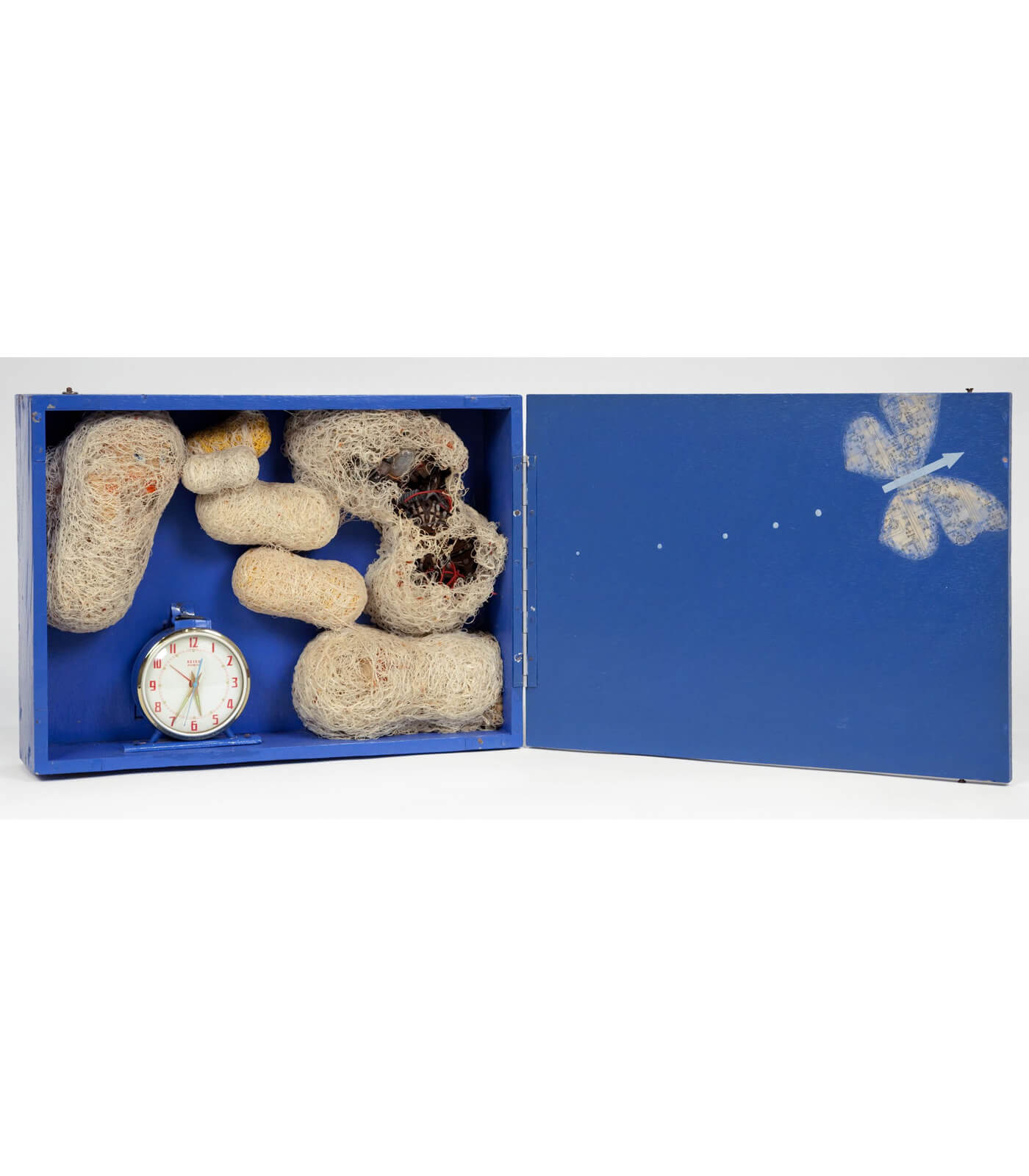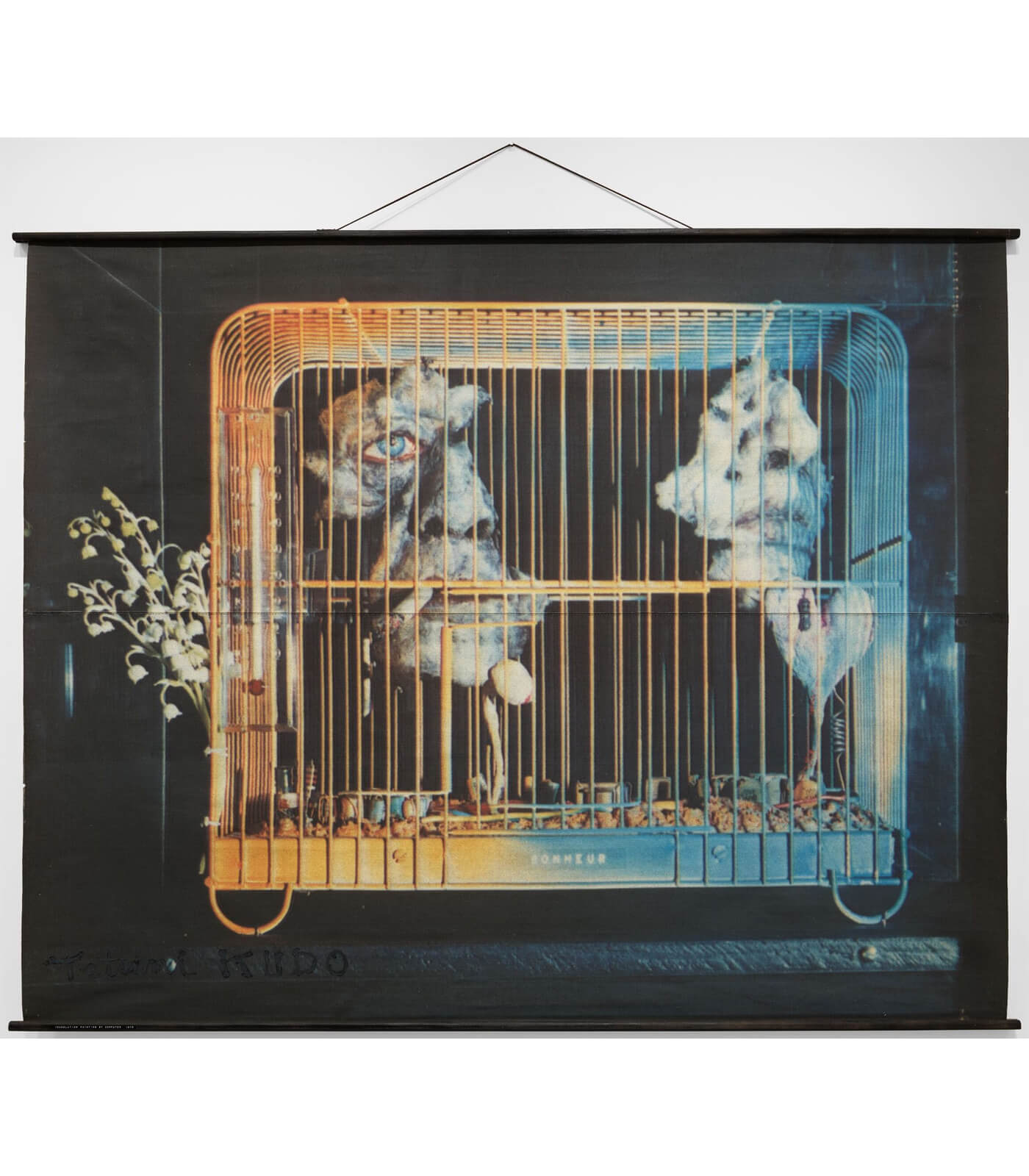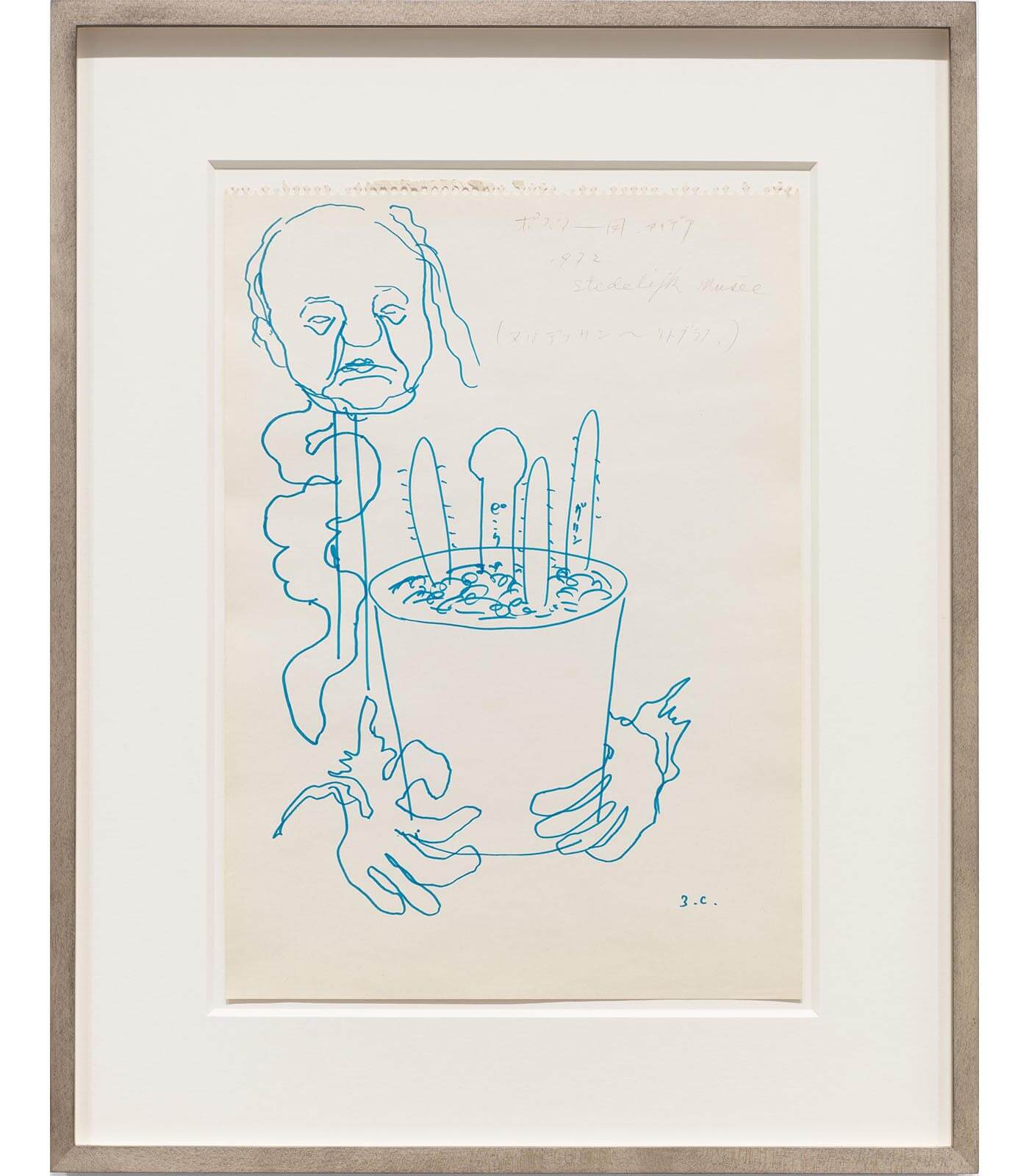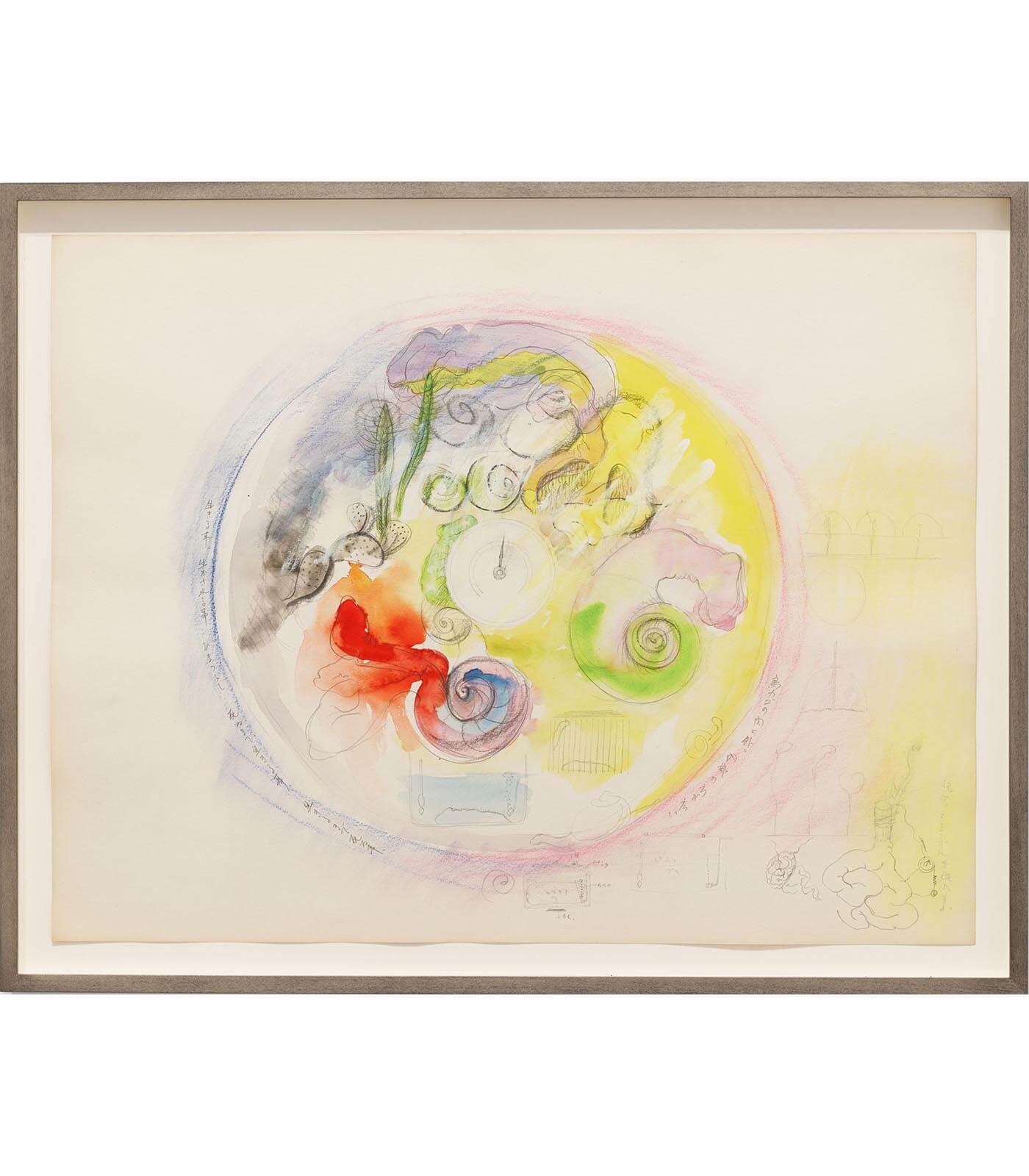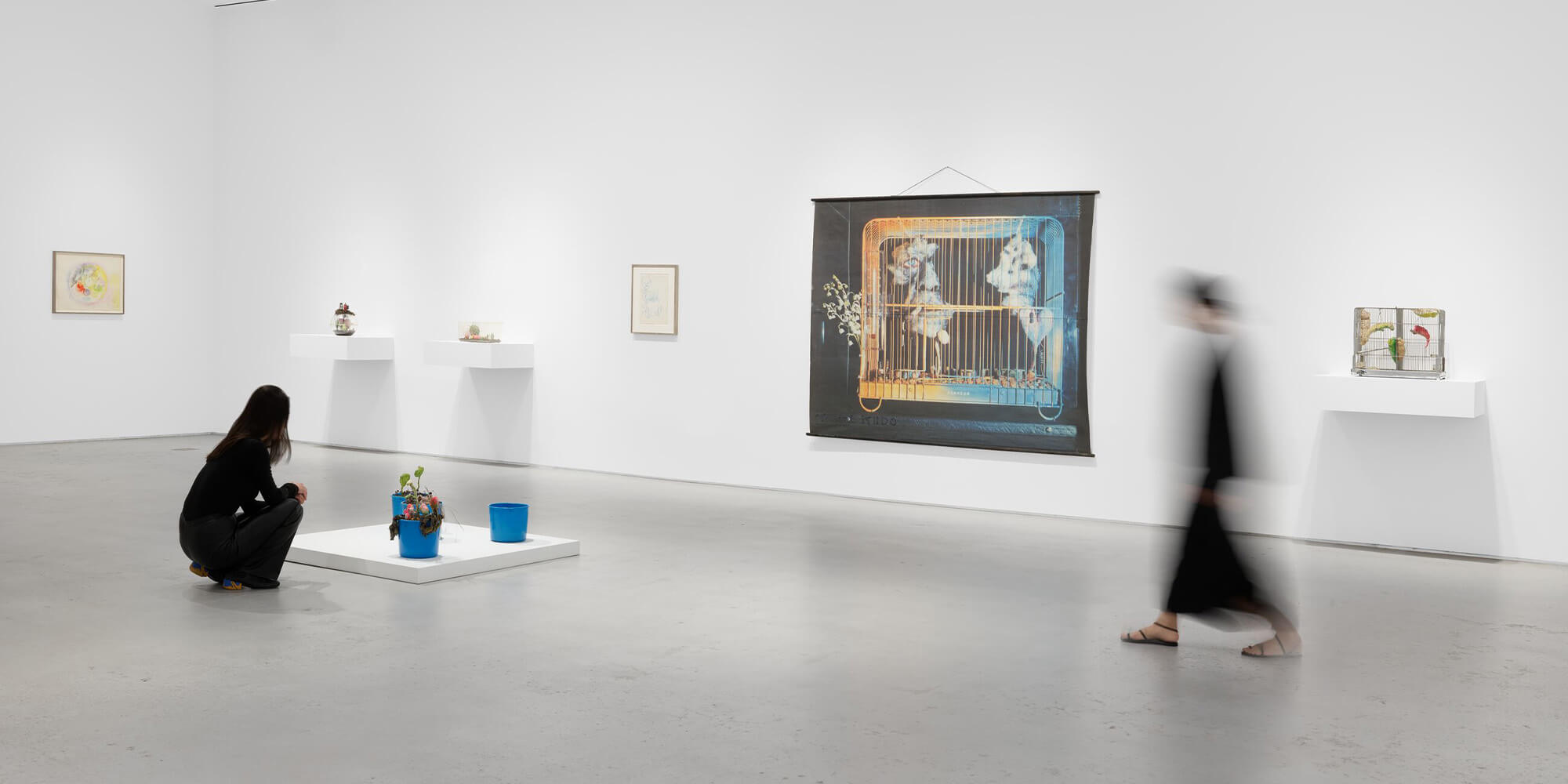
Tetsumi Kudo
Metamorphosis
5 May – 30 July 2021
New York, 22nd Street
On this page:
‘Tetsumi Kudo. Metamorphosis,’ the artist’s first exhibition at Hauser & Wirth New York, focuses upon the late artist’s idea of metamorphosis which emphasizes the need for personal and collective spiritual evolution beyond the values of Western Humanism.
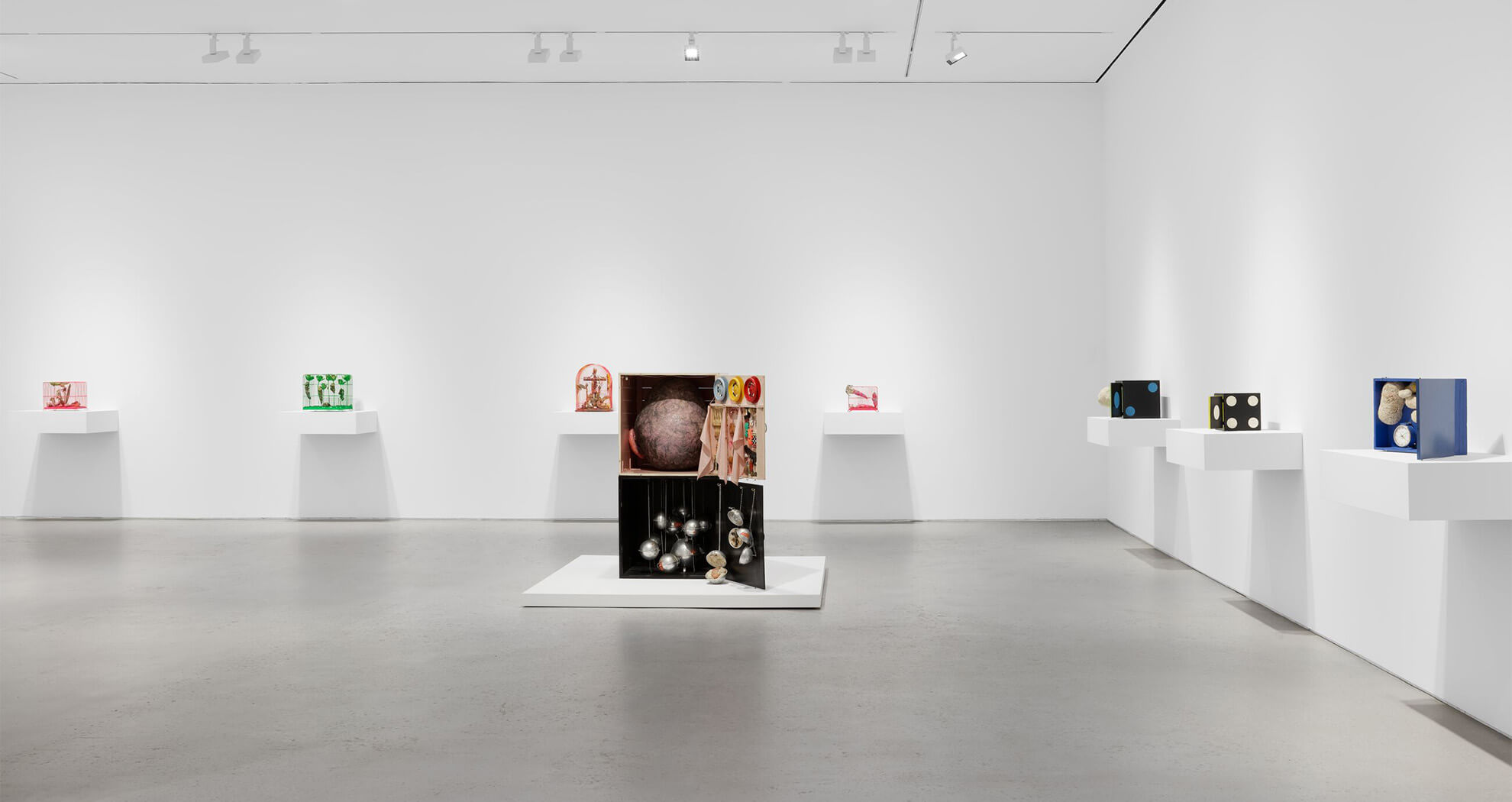
Explore the exhibition
In a wide-ranging practice spanning four decades, postwar Japanese artist Tetsumi Kudo (1935 – 1990) explored the effects of mass consumerism, the rise of technology, and ecological degradation on post- war society through satirical, critical, elaborately detailed and meticulously constructed environments that continue to exert a powerful influence on artists today.
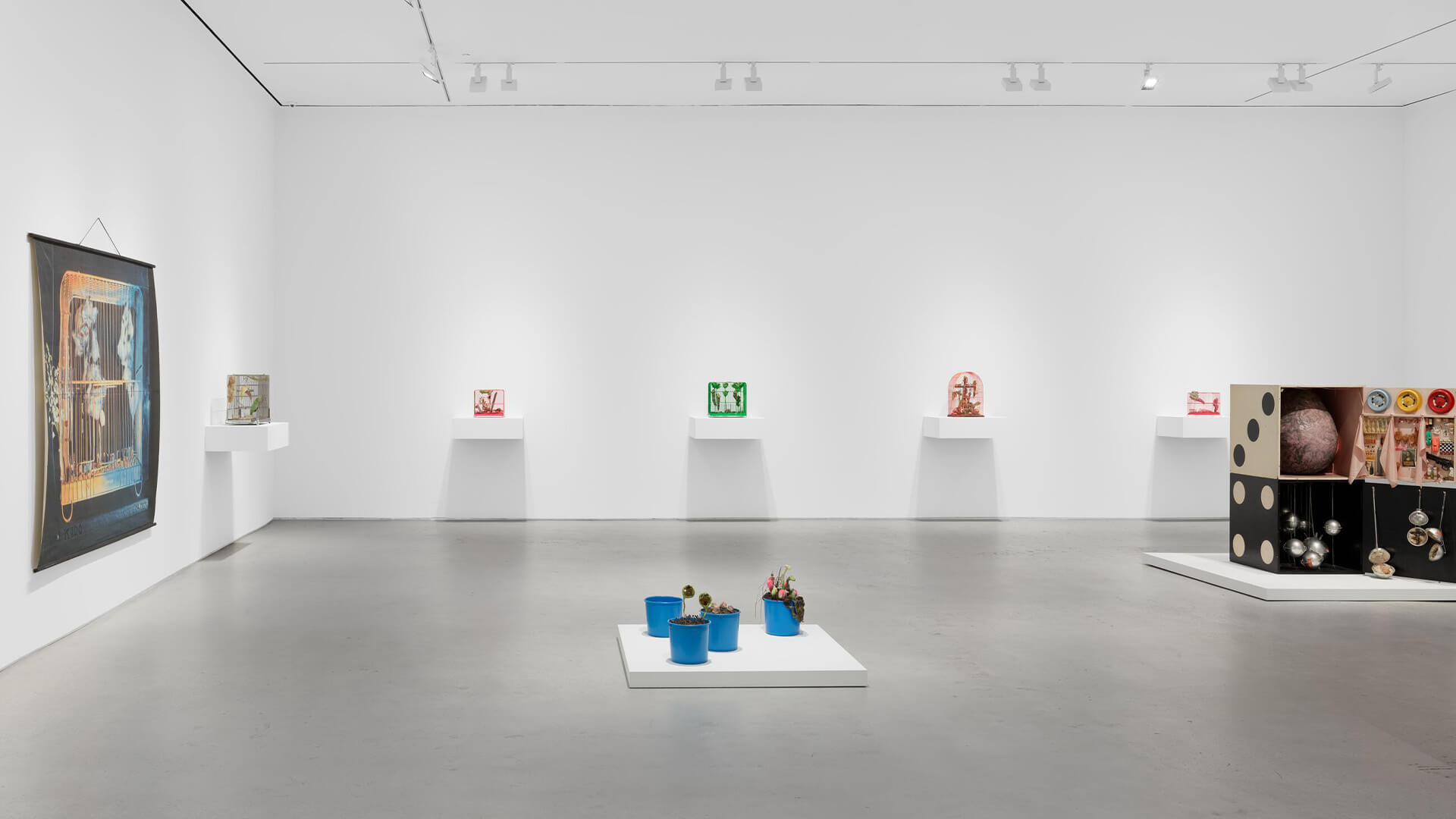
‘Tetsumi Kudo: Metamorphosis,’ brings together 18 significant works created in the decade following Kudo’s move from Japan to Paris in 1962. The selection includes highlights from the artist’s signature container works – cubes, cages, buckets, and terrariums – comprising meticulously constructed tableaux; a monumental canvas made with a computer, and examples of his drawings and conceptual sketches related to these series.
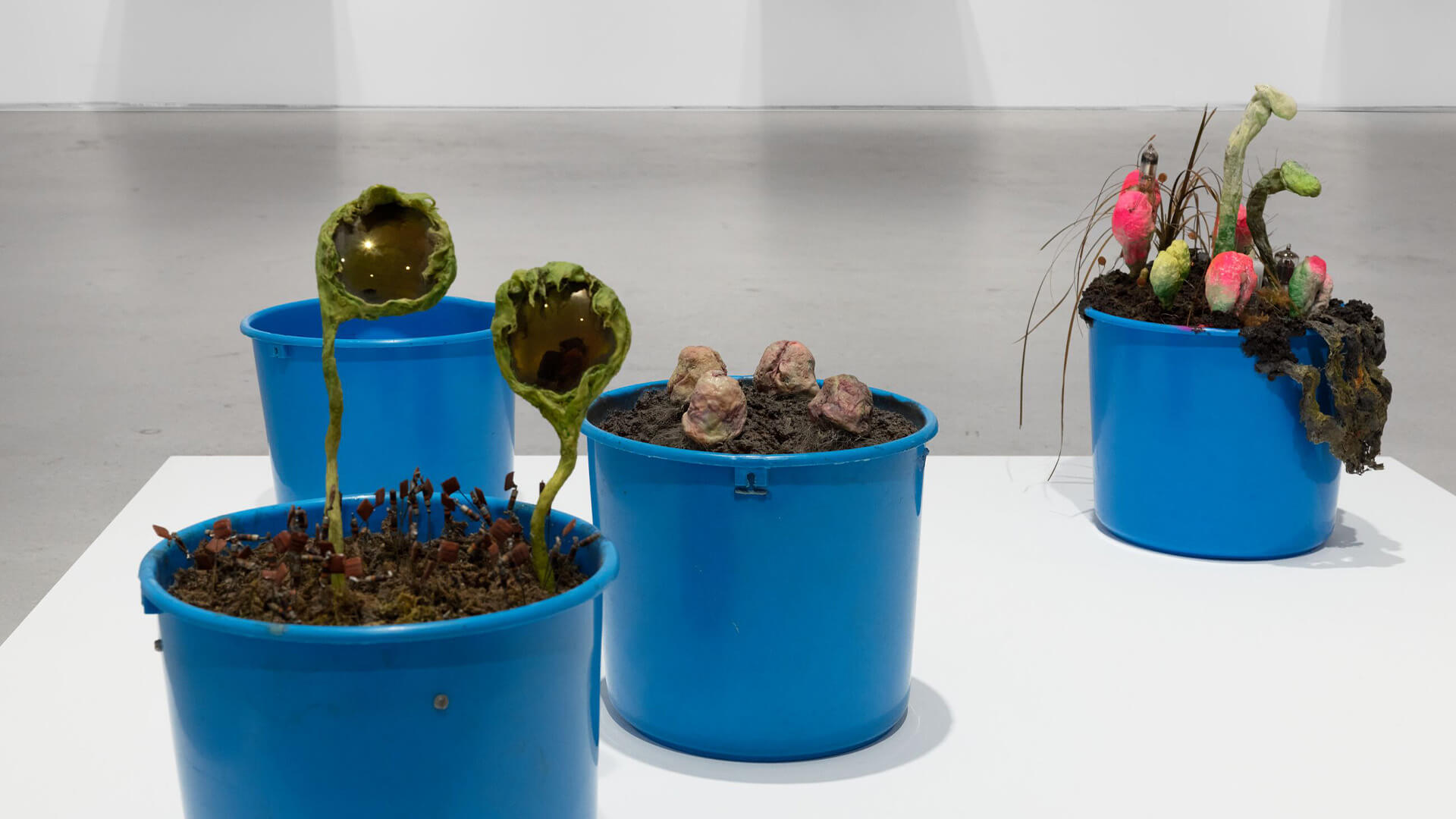
Kudo intended his seemingly grotesque yet playful scenes as both models of contemporary life and provocations meant to encourage viewers to confront and put aside the confines of ego and the values of consumerism and to understand themselves instead as part of an integrated and intricate cosmos in which nature, technology, and humanity influenced each other in a system he dubbed the New Ecology.
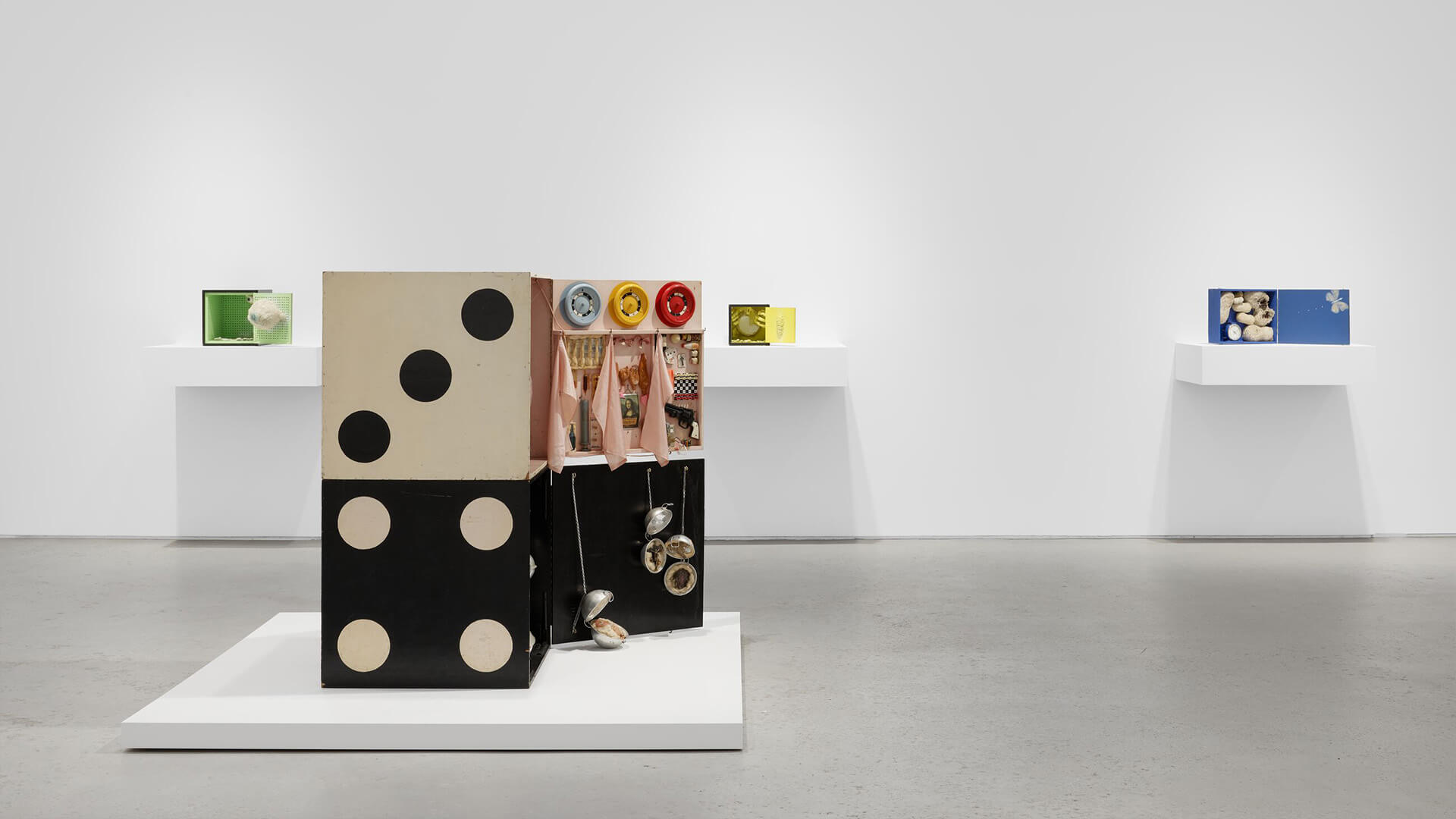
Kudo understood metamorphosis on several levels – as a biological process, a social phenomenon and as a metaphor for the spiritual evolution he believed was necessary. Kudo’s aesthetics and philosophical considerations were influenced by his early interests in biology, set theory, astrophysics, quantum mechanics, and popular culture, and were inflected by post war debates in Japan and Europe about societal evolution after World War II.
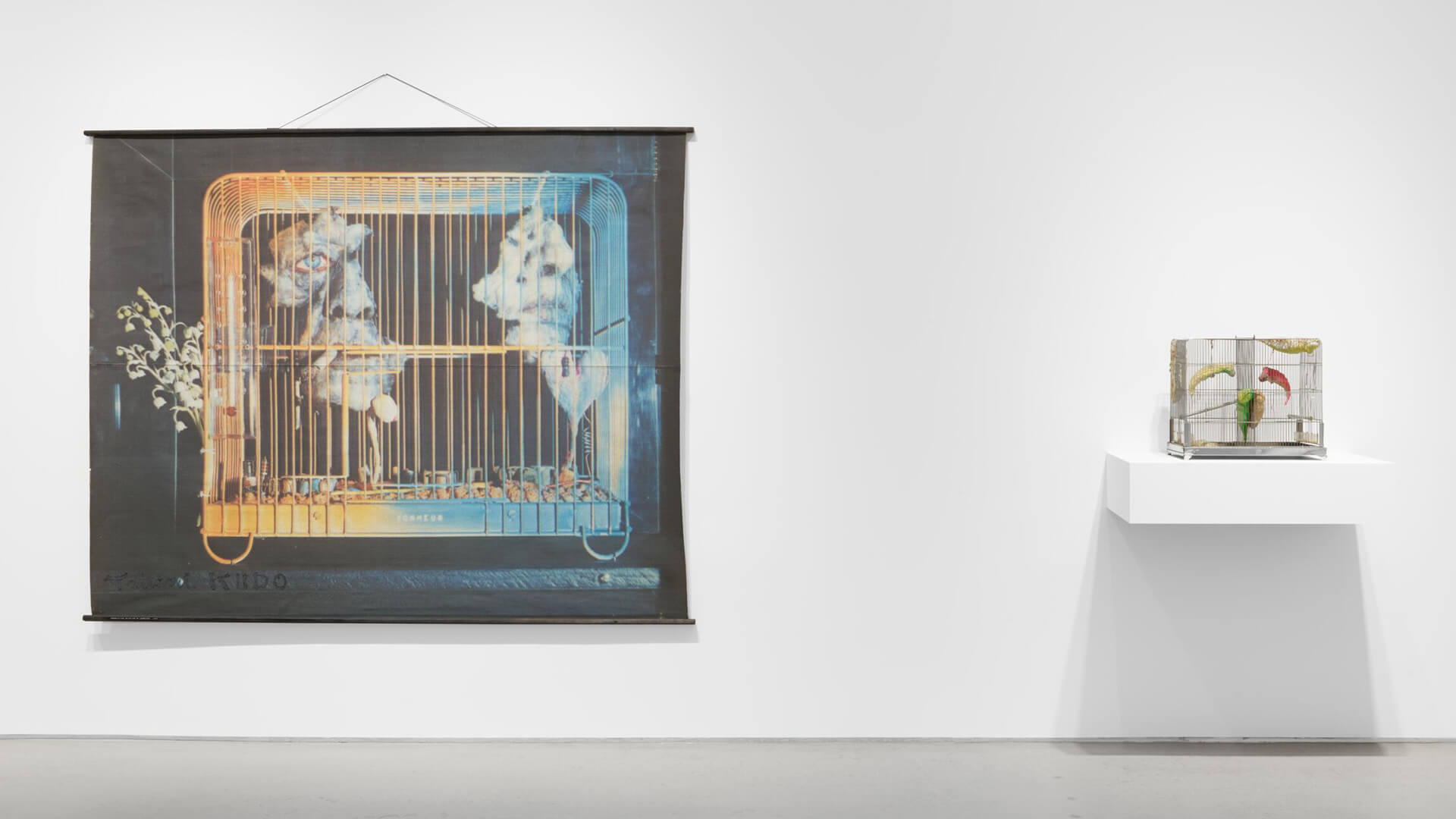
Kudo’s micro-worlds cultivate an uncanny fusing of imagery derived from the artist’s highly personal visual lexicon that includes eyeballs, crawling penises, cacti, plastic flowers, pills, transistors and thermometers. His ‘visual maquettes’ draw viewers into a world of mutations and self-organizing biological systems that reflect the desolation and decay mankind has wreaked upon the macroscopic world.
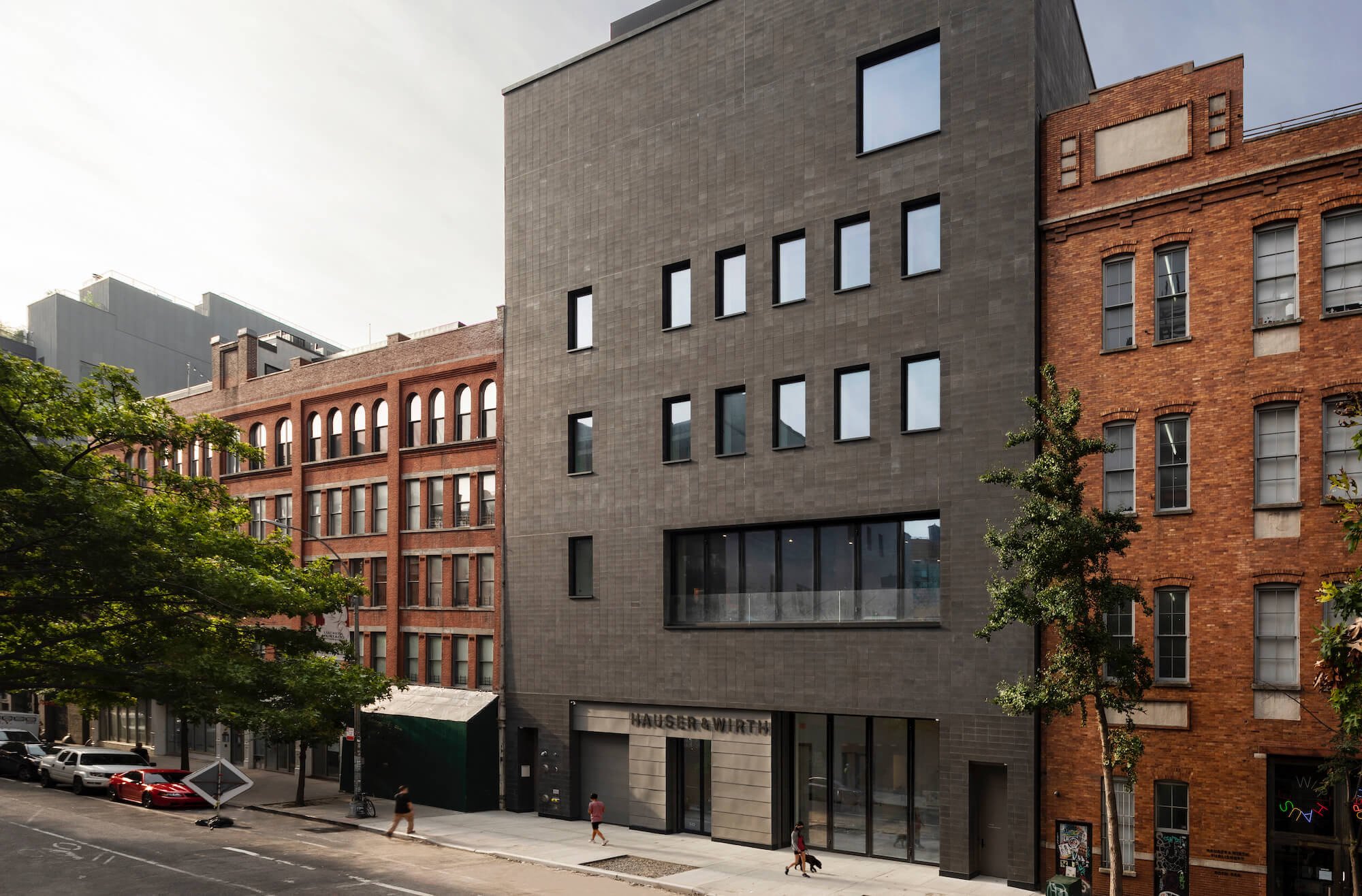
On view in New York
‘Tetsumi Kudo. Metamorphosis’ is open for timed viewing appointments. To book a timed viewing appointment, please make a reservation here. Viewing appointments will be released on a weekly basis. Please review viewing guidelines prior to your visit.
All Images: Courtesy Hiroko Kudo, the Estate of Tetsumi Kudo © 2021 Artists Rights Society (ARS), New York / ADAGP, Paris
About the Artist

Tetsumi Kudo
In a wide-ranging practice spanning four decades, Japanese artist Tetsumi Kudo (1935 –1990) explored the human experience, interrogating the proliferation of mass consumption and the rise of technology. His oeuvre addresses themes of colonialism, racism, social cohesion, and environmental degradation through biomorphic sculptures and assemblages incorporating found materials.
In the late 1950s and early 1960s, Kudo was a key player in the artistic avant-garde, critiquing consumerism and political conformity in Japan, and in the Nouveau Realisme movement in France. Working to subvert the separation between art and lived experience, Kudo’s influence can be found in the works of artists such as Mike Kelley, Paul McCarthy, Isa Genzken, and David Altmejd.
Born in Osaka, Japan in 1935 to parents who were painters and educators, Kudo attended Tokyo National University of Fine Arts from 1954 – 1958. His worldview was shaped from an early age by the destruction of the Second World War as well as a scepticism towards traditional Japanese society that characterized much post-war political debate. Maintaining a contrary attitude towards traditional pedagogy, he supplemented his education by reading pamphlets on astrophysics, set theory, and quantum mechanics and organizing shows with fellow students.
Kudo remained in Tokyo until 1962. During this time he explored forms of expression ranging from gestural abstraction to sculptures incorporating objects such as scrub brushes, woven bamboo, colored yarn and tree limbs. He exhibited regularly in the annual Yomiuri Independant, the most significant venue for contemporary art in Japan. Kudo also held six solo exhibitions often accompanied by happening-like events, activities noted by Allan Kaprow in his seminal book, ‘Assemblages, Environments and Happenings’ (1966).
In 1962, Kudo was awarded the grand prize in the 2nd International Young Artist Pan-Pacific Exhibition. With the prize money of $1,500, earmarked for study in Paris, he and his wife moved to the French capital which became their residence for the remainder of his life. In France Kudo created series of works incorporating store-bought items such plastic dolls and kitchenware, small pet cages in which body parts fuse with transistors and circuit boards, and terrariums and hothouses in which plastic plants grow among vacuum tubes and slug like phalluses. These reflect his belief that ethical values had become as exchangeable as consumer goods and that technology, nature and humanity had come to influence each other in a closed circuit he dubbed ‘New Ecology.’
Kudo began traveling to Japan regularly in the 1980s and taught at Tokyo National University of Fine Arts until his death in 1990. Despite living in Europe for most of his life, Kudo’s art took on a transcultural and cosmopolitan worldview, with work that draws both on Japanese tradition and Western Modernism. His satirical, critical, and often matter of fact artistic practice has become a model for younger artists in an age of globalization and cultural transformation.
Kudo exhibited extensively in France, Holland, Germany and Italy, often inaugurating his shows with happenings attended by figures such as Marcel Duchamp and the venerable gallerist Ileana Sonnabend. In 1964 Dutch curator Wim Beeren included Kudo in ‘Nieuwe Realisten,’ or New Realists, a global survey of contemporary figuration and realism at the Gemeente Museum in The Hague. Major surveys of his work were presented at the Kunstverien, Dusseldorf in 1970 and the Stedelijk Museum, Amsterdam, in 1972. Since his death, Kudo has been the subject of retrospectives at the National Museum of Art Osaka (1994-1995 and 2013-2014) both of which exhibitions toured in Japan; La Maison Rouge, Paris, 2007; the Walker Art Center, Minneapolis, USA, 2008; the Fridericianum, Kassel, Germany, 2016; and The Louisiana Museum of Modern Art, 2020. His work has also been included in group exhibitions at The Museum of Modern Art and The Centre Pompidou.
Tetsumi Kudo’s works can be found in major collections such as Aomori Museum of Art, Aomori, Japan; Centre Georges Pompidou, Paris, France; M+, Hong Kong; Musée d’Art Moderne de la Ville de Paris, France; Museum of Contemporary Art, Tokyo, Japan; The National Museum of Art, Osaka, Japan; The National Museum of Modern Art, Tokyo, Japan; Solomon R. Guggenheim Museum, New York NY; Stedelijk Museum, Amsterdam, The Netherlands; The Museum of Modern Art, New York NY; the Pinault Collection, Venice, Italy and Walker Art Center, Minneapolis MN, among others.
Inquire about available works by Tetsumi Kudo
‘Tetsumi Kudo. Metamorphosis’ is on view now through 30 July 2021 at Hauser & Wirth New York 22nd Street.
Current Exhibitions
1 / 8
